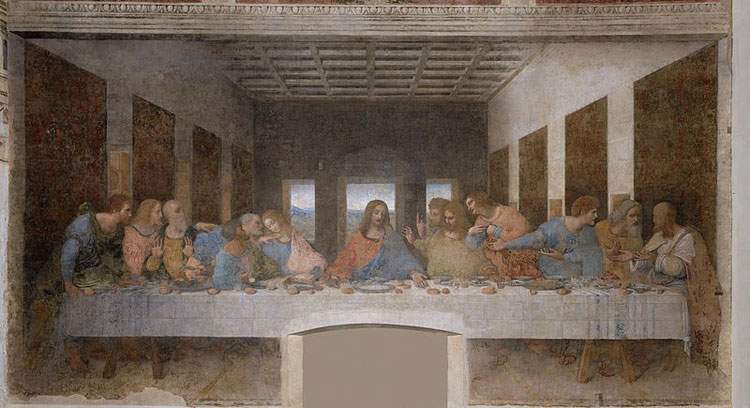The Lombardy Regional Museums Directorate is proposing an initiative in which thirteen photographers will interpret the thirteen state museums belonging to the regional network, each according to their own style, culminating in an exhibition to be held in Milan’s Palazzo Litta in the fall.
“Our network of museums,” said director Emanuela Daffra, “is spread throughout Lombardy, without continuity, in a patchwork fashion. Putting the different components into a system is a stimulating and arduous challenge, given the distances, the paucity of staff and the very different characteristics.”
In fact, the Cenacolo vinciano, the Caves of Catullus in Sirmione, Palazzo Besta, among others, are involved, and others have recently been added, namely the entire monumental complex of the Certosa di Pavia and the Archaeological Park of Castelseprio. Very different realities, but altogether they represent the most visited museum in Lombardy, which counts Unesco sites such as the parks of rock engravings in the Camonica Valley, monuments and works of art celebrated all over the world such as the Last Supper and the Charterhouse of Pavia, archaeological realities of the Roman era among the most important in Central Europe such as the Catullus Caves in Sirmione or the Roman Villa in Desenzano del Garda. And then important testimonies of the medieval and Renaissance periods, from the Scaligero Castle in Sirmione to Palazzo Besta and the twentieth century, with the monumental Expiatory Chapel in Monza.
“In recent years, every possible resource has been invested in restoration, adaptation, rearrangement, and of course the planning continues,” Daffra said. “We have, in other words, worked on the assets to secure them, adapt them to regulations, provide comfortable conditions for visitors. Now we are working on revising the communication apparatuses and fine-tuning the educational and research programs. It has been, and continues to be,” he continues, “a widespread work whose fruits are not immediate but are already evident with the steadily growing results of the period just before the pandemic. In fact, 2019 saw an increase from 1,154,140 to 1,188,793 in the total number of visitors compared to 2018, with two museums (Cenacolo Vinciano and Castello Scaligero) placed in the ranking of the thirty most visited Italian museums in 2019, the Top 30 2019, in 15th place with 445,728 admissions and 22nd place with 308,459 admissions, respectively. Now, with the managers who direct the different sites, we are devoting ourselves to tailoring programming that forges strong ties with the contexts and makes each visit an opportunity to learn about and explore the history of the different territories of which our museums are an expression. Having developed a coordinated image,” he concludes, “for the first time in all of our thirteen museums the visitor will find uniform materials, both in print and online, new and unified in graphics and layout. In each museum or site, the entire regional network will be highlighted.”
The 13 Photographers for 13 Museumsproject is being conducted together with Giulia Valcamonica and the Cinisello Balsamo Museum of Contemporary Photography. The photographers identified are Marina Caneve, Alessandro Sambini, Claudio Beorchia, Flavia Rossi, Vaste Programme, Alessandro Calabrese, Arianna Arcara, Caterina Morigi, Federico Clavarino, Fabio Barile, Roberto Boccaccino, Delfino Sisto Legnani, and Rachele Maistrello.They have been given the challenge of telling, or rather interpreting, the museum entrusted to them, demonstrating how these places laden with history know how to arouse multiple and unexpected echoes if one looks at them carefully. The work will last until early summer and will result in a group exhibition that will be set up from Sept. 26, 2022 until next Christmas in Palazzo Litta, the headquarters of the Directorate. “They are young professionals (born between 1979 and 1991), but already established and several times awarded, selected together with Gabriella Guerci and Matteo Balduzzi of MUFOCO, who will support the Regional Directorate of Museums in this public commissioning project,” Director Daffra stressed. “We are also reflecting on the real possibility of materializing a parallel project: asking as many poets to write some verses to accompany the images of the thirteen venues. All to be collected in a volume that could be featured in all our museums. Should the conditions be right, the project could continue in 2023 involving, for example, thirteen cartoonists and thirteen writers, or video makers alongside children.”
Pictured: Leonardo da Vinci, Last Supper (1494-1498; tempera on plaster, 460 x 880 cm; Milan, Santa Maria delle Grazie)
 |
| Young photographers chronicle Lombardy's state museums, from the Last Supper to the Certosa di Pavia |
Warning: the translation into English of the original Italian article was created using automatic tools. We undertake to review all articles, but we do not guarantee the total absence of inaccuracies in the translation due to the program. You can find the original by clicking on the ITA button. If you find any mistake,please contact us.